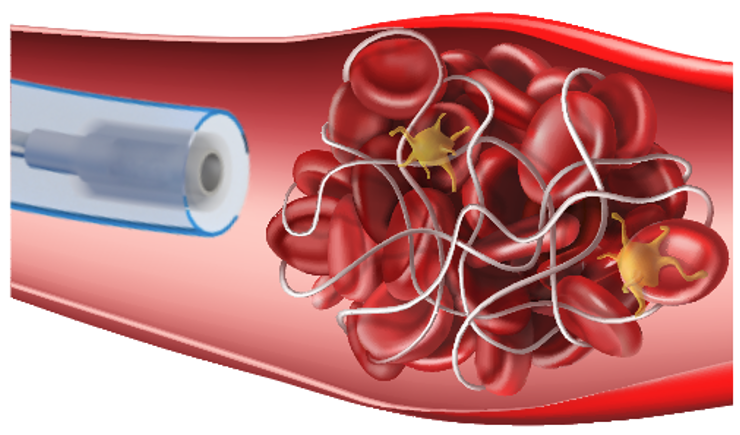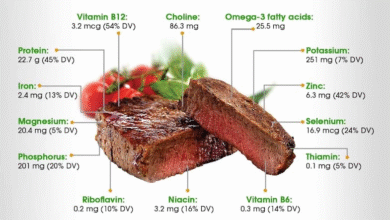Milli-Spinner Thrombectomy: Doubles Stroke Treatment Success

The milli-spinner thrombectomy is revolutionizing stroke treatment by offering a highly effective solution for blood clot removal. Developed by researchers at Stanford University, this innovative thrombectomy technology achieves a remarkable 90% success rate on the first attempt, greatly enhancing outcomes for patients who suffer from ischemic strokes and other clot-related conditions. In contrast to traditional methods, the milli-spinner utilizes a unique mechanism that not only removes clots but also reduces their size without compromising the structure of the clot itself. This is crucial because breaking apart blood clots can lead to dangerous complications. With the potential to dramatically improve the efficacy of existing therapies, the milli-spinner thrombectomy represents a significant leap forward in acute stroke care and recovery.
The development of the milli-spinner thrombectomy marks a significant advancement in the field of thrombus extraction, providing an alternative method for effectively addressing ischemic events. This cutting-edge approach to blood clot removal employs innovative thrombectomy technology that differs from conventional angioplasty techniques. By focusing on the reduction in size of the clot rather than simply extracting it, the milli-spinner presents a groundbreaking strategy in stroke interventions. As researchers continue to refine this technology, its application may extend beyond strokes to other medical issues involving clotting disorders, ensuring a broader impact on patient care.
Overview of Milli-Spinner Thrombectomy Technology
The milli-spinner thrombectomy technology represents a breakthrough in the field of stroke treatment, dramatically enhancing the efficacy of blood clot removal. Traditional thrombectomy methods often rely on breaking apart clots, which can lead to dangerous fragments escaping into the bloodstream. In contrast, the milli-spinner employs a unique mechanism that compresses and reshapes clots, achieving a remarkable 90% success rate on the first attempt. This advancement not only optimizes the procedure but potentially reduces the risks associated with conventional techniques.
This innovative method utilizes a hollow, rotating tube with specially designed fins and slits that apply pressure and suction simultaneously against the clot. The result is a significant reduction in the clot’s size—sometimes down to just 5% of its original volume—while preserving the integrity of the underlying fibrin strands. By refining the way blood clots are removed, the milli-spinner offers an effective solution for patients experiencing life-threatening conditions such as ischemic strokes, which demand immediate attention.
Frequently Asked Questions
What is milli-spinner thrombectomy and how does it work in stroke treatment?
Milli-spinner thrombectomy is an innovative blood clot removal technology developed for treating strokes. It employs a long, hollow, rotating tube that uses compression and shear forces to shrink blood clots without breaking them. This method reduces the clot size significantly, allowing for more efficient removal while avoiding the risk of debris getting stuck in narrow vessels.
How does the milli-spinner thrombectomy improve upon existing thrombectomy technology?
The milli-spinner thrombectomy improves upon traditional thrombectomy technology by achieving a 90% success rate on the first attempt, compared to around 50% with existing methods. Its unique mechanism allows it to reduce the size of blood clots instead of merely deforming or rupturing them, which decreases the chances of complications during blood clot removal.
What are the potential applications of milli-spinner thrombectomy beyond stroke treatment?
Beyond its promising use in ischemic stroke treatment, milli-spinner thrombectomy could potentially be applied in other medical fields, such as removing kidney stone fragments and treating conditions related to pulmonary embolisms or heart attacks, where effective blood clot removal is critical.
Why is time critical in ischemic stroke treatment with milli-spinner thrombectomy?
Time is crucial in ischemic stroke treatment because brain damage occurs rapidly when oxygen supply is cut off due to a blood clot. For every minute a stroke goes untreated, nearly 1.9 million neurons can be lost. The milli-spinner thrombectomy enhances the urgency of treatment by significantly increasing the chances of successful clot removal.
What results have researchers seen with the milli-spinner thrombectomy in clinical trials?
While clinical trials are pending, animal studies and flow models have shown that milli-spinner thrombectomy can dramatically boost the success rate of thrombectomy procedures, doubling the efficacy of current technologies. Researchers anticipate this innovation will significantly improve patient outcomes in emergency stroke interventions.
Can milli-spinner thrombectomy be used for all types of strokes?
Milli-spinner thrombectomy is primarily designed for ischemic strokes caused by blood clots. Its effectiveness in rapidly removing clots makes it an ideal treatment for this type of stroke, which constitutes the majority of strokes. However, the technology may have potential applications in treating other clot-related conditions as research progresses.
What are the key benefits of using milli-spinner thrombectomy for blood clot removal?
The key benefits of using milli-spinner thrombectomy for blood clot removal include a higher success rate (90% on first attempt), the ability to reduce clot size without breaking it, which minimizes the risk of complications, and its adaptability for treating various clot-related medical conditions.
| Key Aspect | Details |
|---|---|
| New Technology | Milli-spinner thrombectomy, developed by Stanford researchers. |
| Success Rate | Achieves a 90% success rate on the first attempt for tough clots. |
| How it Works | Uses compression and shear forces to reduce clot size without rupture. |
| Benefits | Improves outcomes for stroke patients and potentially for kidney stone removal. |
| Current Improvement | More than doubles the efficacy of current thrombectomy techniques and reduces complications. |
Summary
Milli-spinner thrombectomy represents a pivotal advancement in stroke treatment, providing a significantly enhanced approach to blood clot removal. By applying innovative technology to effectively reduce the size of clots without causing rupture, it showcases a remarkable improvement in the success rate for first attempts at thrombectomy interventions. This development not only holds the potential to save lives in emergency situations but also to transform clinical practices in treating various clot-related health issues.




